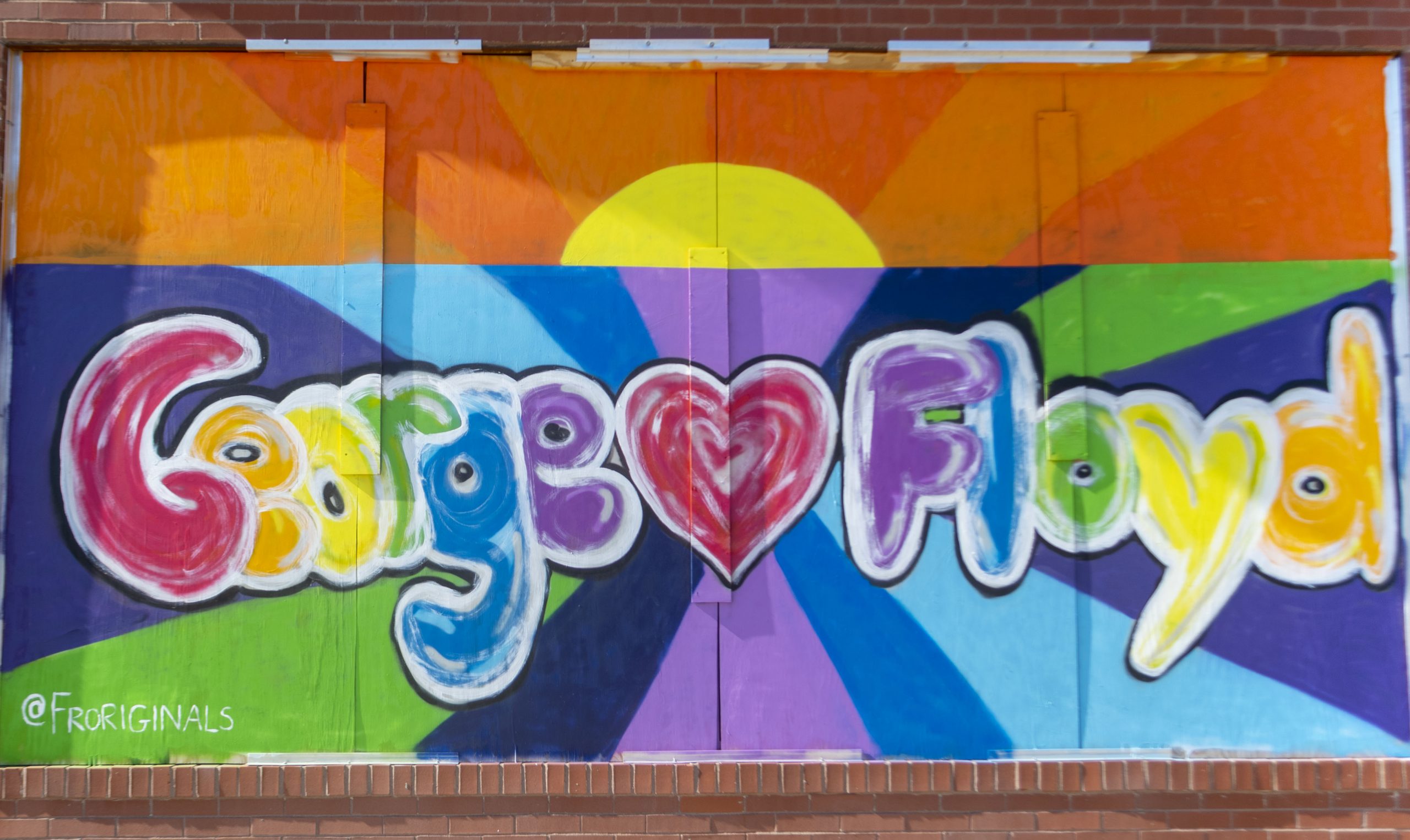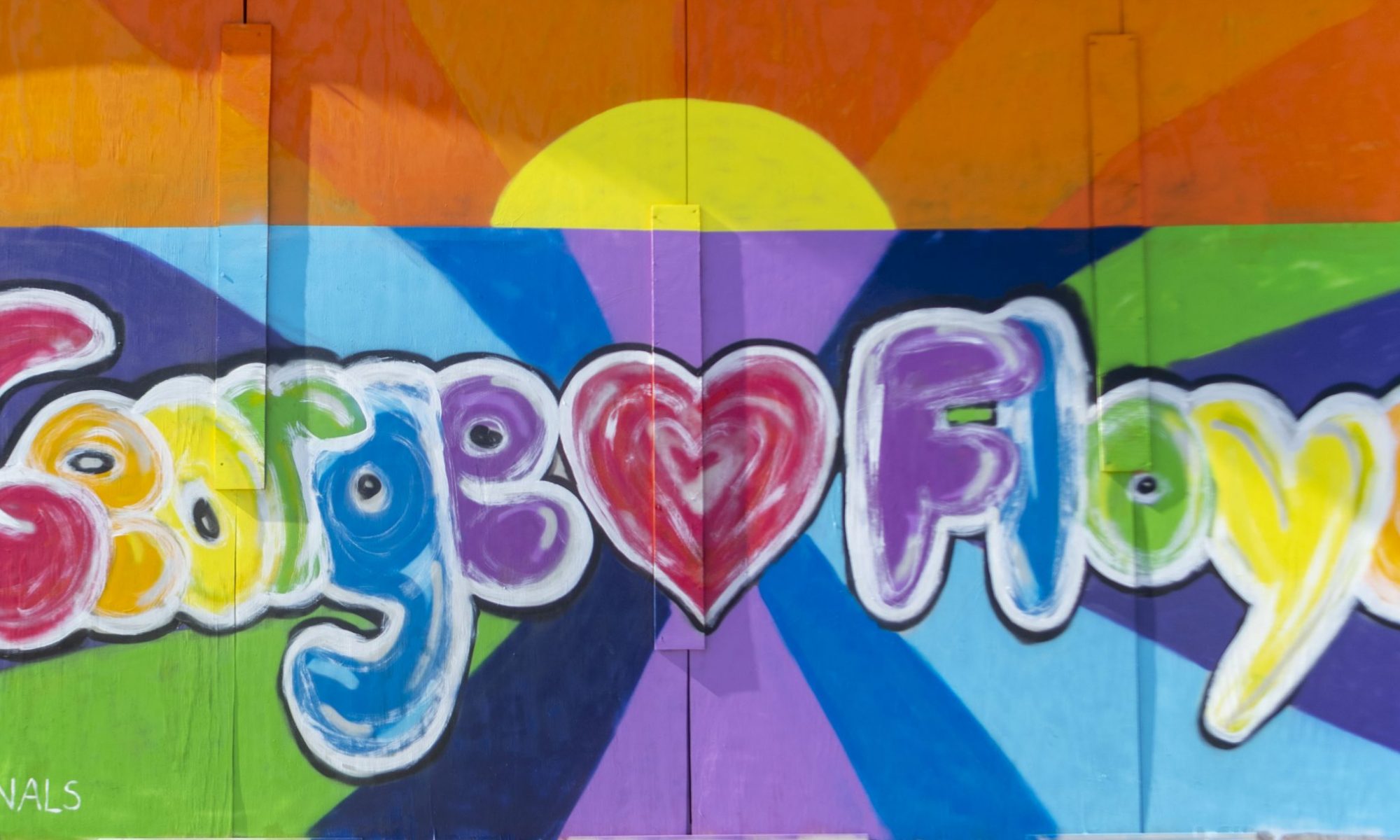
Titled ‘George Floyd,’ this mural is located on 3010 Minnehaha Ave in Minneapolis. Several St. Thomas students and professors are working together to preserve street art in response to the killing of George Floyd that would otherwise be temporary. (Libby Simpson/TommieMedia)
Several St. Thomas students and professors are working together to preserve street art in response to the killing of George Floyd that would otherwise be temporary.
Art history professor Heather Shirey, alongside St. Thomas English professor Todd Lawrence and Geography professor Paul Lorah, launched the George Floyd and Anti-Racist Street Art Database on June 4 after Floyd’s death. Shirey said the database functions as both a tribute to Floyd and a statement about anti-racism.
As the public responded to Floyd’s death, Shirey and her co-founders took notice of the multi-faceted art going up on Twin Cities and international walls, expressing anger, calls for justice and demands for change.
“It was really important to try and document all of those voices and those conversations that were taking place on walls,” Shirey said.
The database, housed under the Urban Art Mapping Project, contains 172 pages of art pieces, each divided into nine different categories ranging from graffiti tags to large street murals. Shirey’s team also runs a COVID-19 Street Art database under the project.
Shirey said the database initially only contained a few of their own pieces, but it was open to public submissions from the get-go.
“We always knew right away that it had to be crowdsourced to really be an effective project,” Shirey said.
The crowdsourcing model worked. Since its founding, the database has grown, receiving submissions from local and international sources. As of March 19, the database has had over 27,000 site visits from 143 different countries.
“The voices that are expressing so many different things on the walls are quickly erased. I feel like having an archive or a database helps us amplify those voices, and helps us to continue to see how complicated this moment and this movement is,” Shirey said. “It’s really important to archive that and to be able to teach about the complexity of this moment in the future.”
The database has employed several student researchers, including Frederica Simmons, an art history graduate student at St. Thomas. In her work, Simmons said she works to provide in-depth, consistent context on each piece for the database.
“It’s a very fine line of not providing too much information, but providing enough context that makes it understandable and helps people to interpret the materials online,” Simmons said.
In the classroom
The database is being used as a learning tool for Shirey, Lawrence and Lorah in their St. Thomas classes. Shirey starts her art history courses with the database to help students understand how art can connect to today’s world.
“I want students to think about what’s happening right around them and how art is responding to that,” Shirey said. “I like that the George Floyd and Anti-Racist Street Art Database has such a big range of responses so people can look at so many different works and see what is really speaking to them.”
In Shirey’s introductory course, she asked students to use street art from one of the databases to explain to a future student what it’s like to live through uprisings and COVID-19.
Shirey hopes that eventually her students’ contextual write-ups could be regularly added to the website. One student, TommieMedia reporter and first-year Owen Larson, already had some of his work added to the database.
Preserving the movement
The database is also working in collaboration with organizations Save the Boards, run by Kendra Zellner-Smith, and Memorialize the Movement, run by Leesa Kelly, to photograph and archive over 600 individual plywood boards that were used as canvases.
“All of these plywood boards that were getting put up and all of these beautiful murals that were being produced would eventually just go in the garbage,” Simmon said. “(Zellner-Smith and Kelly) actually came together and started collecting boards.”
Beginning in January as a student researcher for Memorialize the Movement, Simmons works with other students to help archive collected art and provide captions for each piece to be published on the Anti-Racist Street Art database.
“With it being a community partnership, we’re helping them but then we also have the benefit of adding the images of the boards to our database. So it’s something that is mutually beneficial for everybody,” Simmons said.
In archiving the boards, both physically and digitally, Shirey and Simmons believe they are able to preserve the movement.
“So much can be missed just if you’re not in the right area at the right time,” Simmons said. “I think this project has been really great at capturing these ephemeral and fleeting moments and making them widely accessible to a large group of people.”
Simmons said that Memorialize the Movements’ physical boards are currently stored in the Northrup King Building in Minneapolis, but must leave the space by October. The movement is raising money for a permanent storage space on GoFundMe.
“Anti-racist street art I think is really art that is calling out the oppression that we see in the world and attempting to rectify that. So there’s a lot of different mediums through which that can occur,” Simmons said. “It’s all tied back to fighting against the perpetuation of these really oppressive and discriminatory thoughts and behaviors.”
Emily Haugen can be reached at haug7231@stthomas.edu.
Irene Shin contributed to this report.

